NAME : ‘Cola’
AGE: 6 Months
BREED: Spoodle
Case Notes
‘Cola’ is visiting Mosman Veterinary Hospital as she is being desexed today. Cola has been a patient at Mosman Vet since she was a puppy and has recieved her vaccinations, microchip and up-to-date care (including flea and worm treatments) thus far. She has always been a healthy family pet and has no underlying or predispoing ailments.
The surgery to desex a female dog is called a ‘Spey’. This is a very common operation, and one which our vets perform many times a week. A lot of behind the scenes work goes into preparing a dog for surgery, and also in recovering them from surgical procedures.
8.30am: ‘Cola’ is admitted for her procedure.
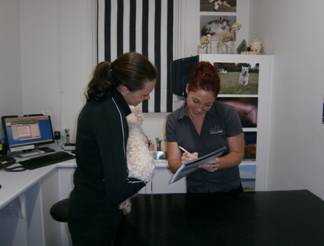
Senior Veterinary Nurse Victoria begins the admission process by giving ‘Cola’ a full physical examination and taking ‘Cola’s’ vital signs. She pays particular attention to ‘Cola’s’ ears, eyes, teeth, heart, skin and coat and records her current weight. The examination on admission is important because sometimes an abnormal or unusual result may require this routine procedure to be managed differently. It is also important to get a correct weight so that her anaesthetic doses can be finely calculated.
‘Cola’ is given a clean bill of health and upon completion of the neccessary paperwork, she wags goodbye to her owner and is transferred to hospital where she is placed in a comfy kennel and patiently awaits her procedure.
8.50am: Preparing for surgery.
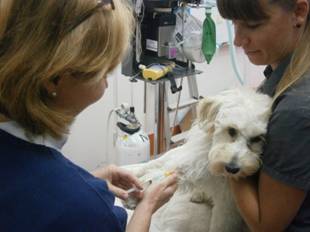
‘Cola’ is given a medication called a ‘pre-med’ to help her relax and to make her drowsy. All of her surgery charts are prepared by nurse Victoria and her anaesthetic doses are carefully calculated. Once ‘Cola’ is feeling sleepy, the nurses shave a small patch of fur on her leg and an IV (or intravenous) catheter is placed into her vein. This creates a ‘port’ or ‘pathway’ where the anaesthetic can be administered. ‘Cola’s’ vital signs are monitored every 30 minutes until the time of surgery.
10.00am: Time for surgery.
Veterinarian Penny injects a fast acting an anesthetic into ‘Cola’s’ intravenous catheter. Once she is asleep, Penny places a tube into ‘Cola’s’ airway (to help her breathe) and then transfers her to theatre. Nurse Victoria begins to disinfect or ‘prep’ the surgery site with a special scrub consisting of chlorhexidine and iodine, while Vet Penny ‘scrubs-in’ by cleaning her hands thoroughly and putting on a gown, mask, and sterile gloves ready for surgery.
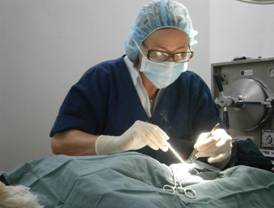
During the procedure (which involves removal of the uterus and ovaries) nurse Victoria closely monitors ‘Cola’s’ anaesthetic levels, blood pressure, temperature and blood oxygenation levels. Once the surgery is completed, ‘Cola’ is moved through to recovery ward where she is placed into a cozy kennel with plenty of blankets to keep her warm. Nurse Victoria sits with ‘Cola’ as she wakes up, and her vital signs are monitored closely until she regains complete consciousness.
11.00am: In Recovery.
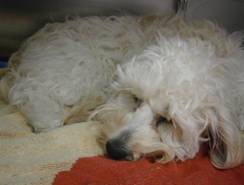
Once awake from the anaesthetic, ‘Cola’ is given some post operative pain relief and is allowed to rest after her surgery. After an operation dogs are usually quite sleepy and will doze for several hours. ‘Cola’ is monitored closely during this time.
12.00pm: Time for lunch.
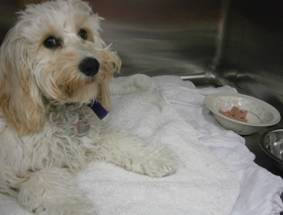
‘Cola’ is recovering well and is given some lunch and something to drink. Her IV catheter is removed, her surgical wound is checked and her discharge notes are prepared.
‘Cola’ is looking bright and alert, and whilst she tucks into her yummy lunch, nurse Victoria phone’s her mum with an update and a discharge appointment is made.
3.30pm: Home time!!
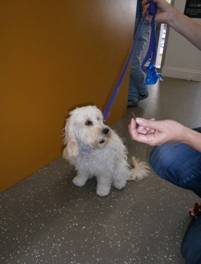
‘Cola’s’ owner arrives at the clinic at 3.30pm and has a discharge appointment with the nurse Victoria. They discuss how ‘Cola’ should be fed, exercised, and cared for following her surgery. Her owners are also given some post-operative instructions to take home and read. Extra pain medication is dispensed so that ‘Cola’ will be comfortable over the next few days.
‘Cola’ greets her owner with a waggy tail (she even eats some treats!) and heads off home looking forward to a few days of TLC and special care with mum and dad.
Posted on 18 October 2014
Last updated on 11 December 2019
Tagged with: desexing, surgery
